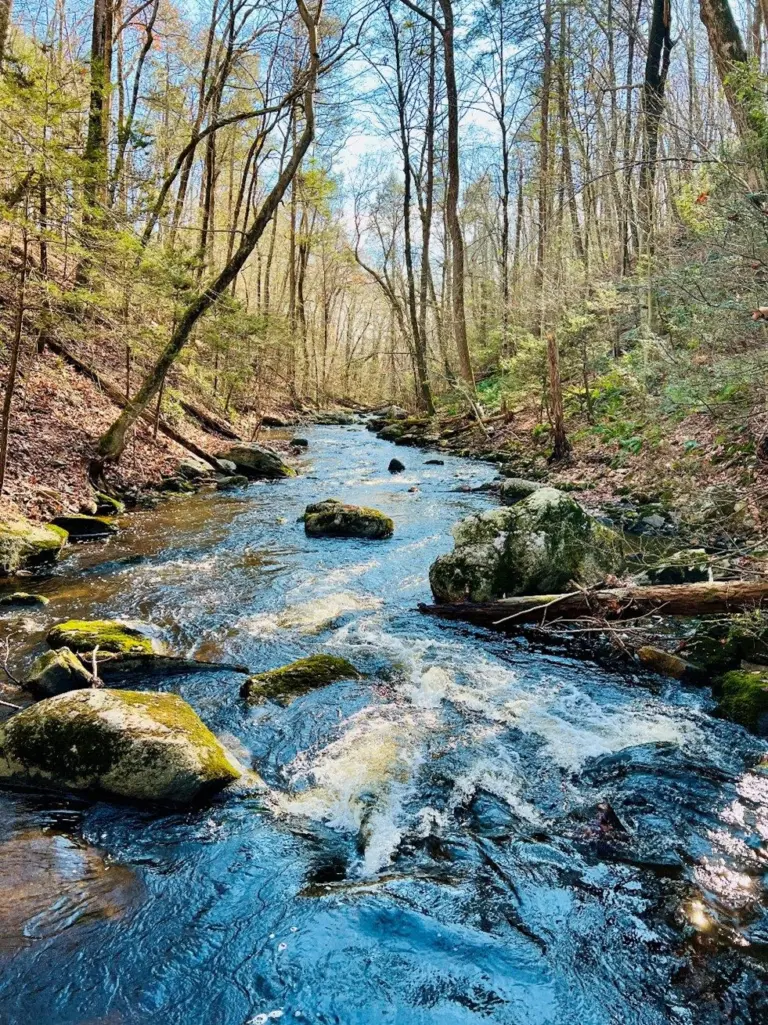
By Jim Knox
I’ll always remember the first night my parents gave me the car keys. I had received my license and I was finally permitted to drive my family and friends. To celebrate, we went out to Friendly’s for some ice cream. Yet, one thing made that night especially memorable. On the way home, a tawny creature streaked across my high beams with blurring speed. The animal covered Whippoorwill Road in just two bounds. If it weren’t for the fact it paused at the hedgerow on the shoulder, or that my brother and our friend screamed out with excitement, I might have doubted my eyes. There, paused for a fraction of a second, was a ghost of an animal — often rumored, yet rarely seen.
Lynx rufus, or the Bobcat, is an American original. From the Mojave Desert to the Rocky Mountains and from Maine’s north woods to the Florida Everglades, this compact predator thrives. Sporting versatile camouflage, shielding them from the eyes of predator and prey alike, bobcats are masters of stealth and ambush. Marked with a cream-colored belly, browngray flanks and back, the bobcat is flecked with cryptic black spots and bars overlaid with a reddish tinge. This reddish cast is what gives the bobcat the common name of Bay lynx, distinguishing it from its silvery-furred cousin, the Canada lynx of the far northern United States, Canada, and Alaska. Both cats possess a short, 4-7-inch bobbed tail and tufted ears. With an average height of two feet, an average length of three feet and weight ranging from 12 to 40 pounds, these small to midsized cats command a larger-than-life reputation.
In fact, the bobcat’s ferocity and tenacity are legendary. A frontiersman who could “lick his weight in wildcats” could be held in no higher esteem by his rugged peers. Possessing a rare blend of adaptability, speed and disproportionate power, the bobcat is equally capable of dining on grasshoppers or taking down full-grown deer. We must look no further for the secret of the bobcat’s success than its adaptability. As a generalist, equally at home hunting rabbits on the ground, squirrels in trees, or frogs in streams, bobcats carve out a living by shifting gears when the prey is scarce. This accounts for the bobcat’s ecological role as a creature of both untouched wilderness and suburbia.
It is the bobcat’s tenacity and sheer toughness that deserve a second look. Unlike its larger cousin, the Amur tiger which targets smaller prey when the hunting gets lean, the bobcat takes the opposite tact, focusing on the largest prey — such as Whitetail deer — during the leanest times. And it is during those lean times when the bobcat proves its mettle. While its close kin the Canada lynx can endure a deadly 55 degrees below zero, the bobcat can match that lethal mercury plummet and raise the bar, and the mercury, to withstand 125 degrees Fahrenheit as a resident predator in aptly named Death Valley National monument. Fully capable of a 180-degree temperature range — that’s one tough cat!
It is not just the bobcat’s physical traits that mark it as a predator with few rivals. It is the behavioral bobcat that gains the advantage over competitors and prey alike. Placing its rear paw pads deftly within its front paw pads when stalking, the bobcat can approach prey with phantom-like stealth. These solitary predators also shift their hunting from crepuscular (dawn and dusk periods) to nocturnal, or even diurnal periods to capitalize on prey abundance, avoid competition, or remain hidden from their human neighbors.
With so many Connecticut residents embracing nature, we could ask for no better wild neighbor than the Bay lynx. This wild neighbor regulates small mammal populations — mitigating the spread of tick-borne diseases. Yet few of us know of its existence among the mosaic of woods, streams, golf courses and reservoirs around us. Found in every town in Fairfield County, the bobcat flies under our collective radar, often mistaken as a housecat, fox, or small dog. With a natural aversion to humans, yet a demonstrated ability to thrive in our midst—without us being the wiser — the bobcat has the best of both worlds.
Their hallmark adaptability has served bobcats well. While other predators diminish due to human expansion and habitat conversion, bobcat populations have remained remarkably stable in the U.S. and on the extremes of its range in northern Mexico and Southern Canada, despite hunting and trapping practices for this furbearer throughout North America. In the bobcat we have a species and symbol of New England’s wild heritage residing within our own zip codes. Imbuing our backyards with a hint of true wilderness, this speckled carnivore reminds us that it is possible to strike a balance between a wild that was once feared and can now be revered.
Jim Knox is Curator of Education at Connecticut’s Beardsley Zoo where he directs education and conservation initiatives to advance the protection of wildlife in Connecticut and beyond.




